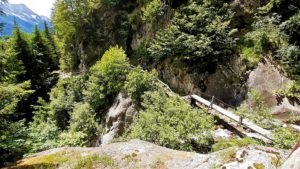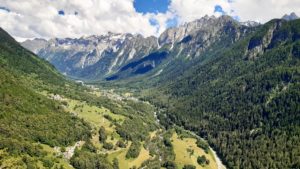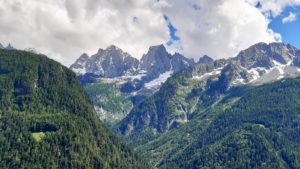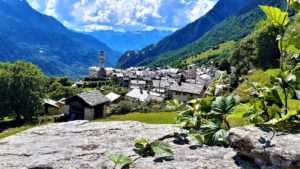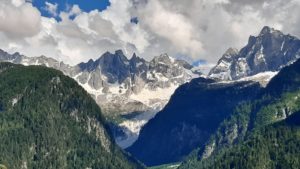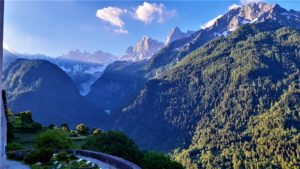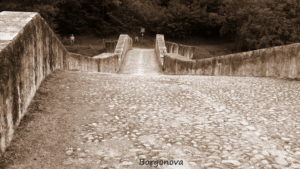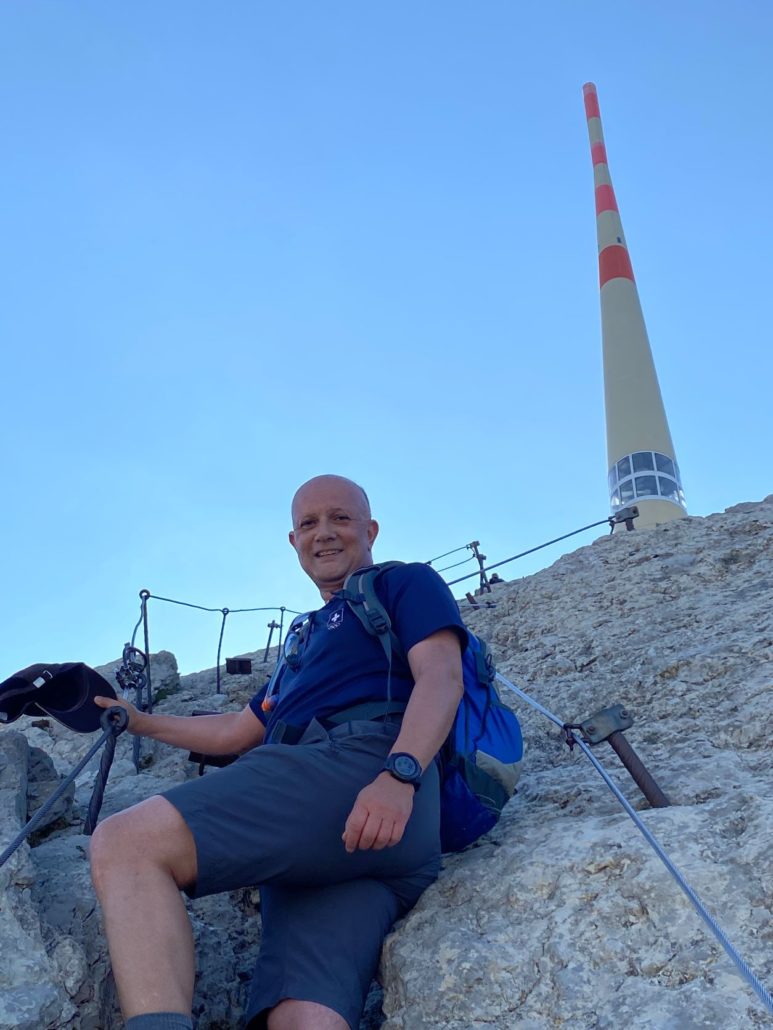From Casaccia we hike in the Bergell, with views to the massive mountain ranges of Piz Badile, Pizzo Cengalo and Cima della Bondasca etc as well as the south side of the valley. The inhabitants here speak Italian but most of them also speak German.
A pre- and pro-historic hill-top settlement has been documented in the Bergell, which already came under Roman rule in 100 BC. In the 4th Century, Christianisation followed through Gaudentius, who found protection here from the Arians. The San Gaudenzio Church in Casaccia is dedicated to him.
In 1387, the governor of the Bishop had a paved road constructed from Tinizong near Savognin over the Septimer Pass. In the lower part of the Bergel, a major landslide occurred on 4th September 1618. As a result of erosion, caused by soapstone mining, huge masses of rocks fell from Berg Conto and totally buried the town of Plurs and the village of Schilan under the stoney rubble. Around 2430 people were killed. In 2017, an enormous mudslide occurred near Bondo, burying 8 hikers in its path.
In 1827/1828, the road over the Maloja Pass was built, which led to the abadonment of the mule track over the Septimer Pass.
Sights and facts
| Km 1.5/2.5 | From Vicosoprano we again have two options: continue on the valley on Via Sett (64) or return to the Panoramaweg to Soglio. The climb is a bit strenuous, but it’s worth it. Some pictures should prove this:
Borgonovo / Stampa. The row of ancient 17th and 18th Century houses along the main street in Borgonovo is constantly interrupted by small gardens and traditional stables. From the old double-arched stone bridge, one can enjoy the beautiful view of the Church of San Giorgio, rebuilt in 1694. The interior is decorated with a stained-glass window in the bezel of the choir, a work by the well-known regional artist Augusto Giacometti. In the neighbouring cemetery, there is the final resting place of the artistic family spanning two generations, from Giovanni, Augusto and Alberto Giacometti.
In Stampa we visit the valley museum, located in the Ciäsa Granda, a manor house built in 1581. There we learn more about the flora, fauna and geology of the Bergell. The museum also offers an insight into the earlier life of the inhabitants. In the Giacometti-Varlin Room, a number of works by these famous artists are exhibited. The studio of the sculptor and artist Alberto Giacometti is located close to the museum. In close-by Coltura, we visit the Palazzo Castelmur. The northerly part of this impressive building was built by Baron Giovanni Castelmur in 1723, the southerly part from 1850-55. The Moorish-Gothic style and the battlement towers are reminiscent of a castle whilst the wonderful gardens complete this impression. Nowadays, the Palazzo houses the historical archives of the valley. |
| Km 12 | Castasegna. In Castasegna we leave Switzerland and hike in Italian territory to Chiavenna. The path is mostly unmade, goes through villages, gardens of houses, chestnut forests and also includes a new level of vegetation.
I wish you a good continuation of your journey and hope that you have enjoyed your hiking tour through Switzerland. For the continuation see the Via Columbani: https://viacolumbani.com or https://www.thecolumbanway.eu/en/the-route/walking-the-route/ Thank you for your visit and your company. Goodbye/ Arrivederci! Your hiking trail guide! |


